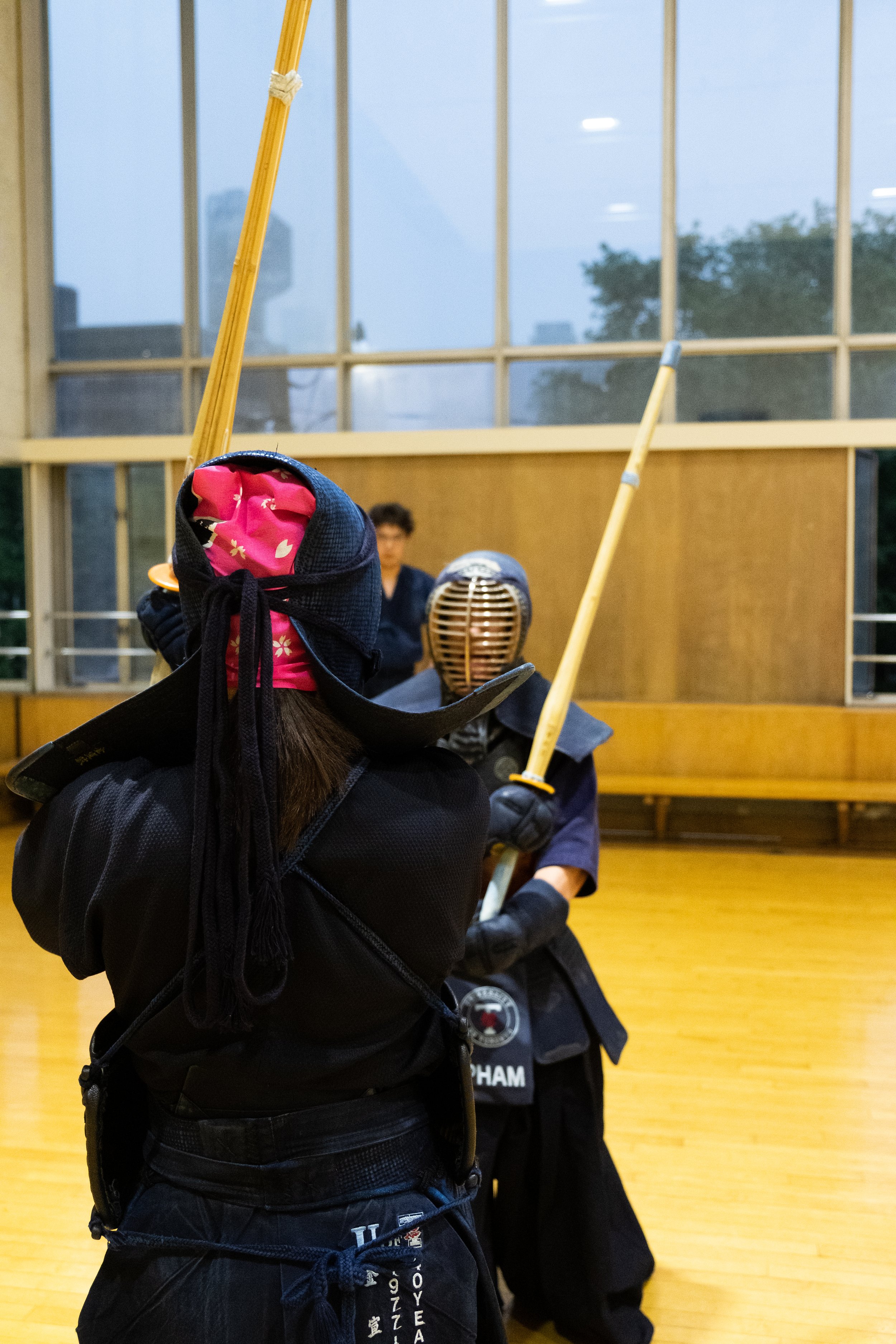
Purpose of Kendo
The content provided here were taken from Tatushi’s website.
Respecting The Sword
Kendo (the way of the sword 剣道) was developed in Japan as a means to safely & effectively advance our sword techniques of defeating our opponents. Nowadays, instead of a real Katana (sword 刀). Kendo is practiced with a Shinai (bamboo sword 竹刀). However, A Shinai can still prove to be a dangerous weapon when used incorrectly. Therefore, a Shinai must be treated with the same degree of care as a Katana. For example, it is considered rude to step over a Shinai because it represents a tool used in life and death situations, and so it must be treated respectfully.
Respecting Your Opponent
A match may be decided by the death and defeat of either one or both combatants. To develop and hone our techniques of defeating each other. We must first practice with a mutual understanding and intentions. Without it, it can be very dangerous and we would not exert all our power to hone our techniques. Therefore, we must treat each other with respect and fairness to avoid inflicting serious injury upon ourselves and each other.
To reiterate. Although practicing Kendo is accompanied by the risk of injury. We maintain an attitude of treating each other fairly, and paying our respects and gratitude for helping each other hone our techniques. This is Rei (etiquette 礼) in Kendo. Even in modern times, we must not forget our feelings of respect and gratitude towards each other. The common phrase “Kendo begins & ends with Rei” (礼に始まり、礼に終わる) comes from this thinking. For this reason, players in a Shiai (match 試合) who lack respect or express disrespectful behavior may receive a penalty for misconduct and even lose the match entirely.
Kendo is NOT a practice of violence. Please do not forget to be considerate and treat each other with care.
About Safety
As described above, Kendo has been developed as a safe means toward self-improvement. In actuality, practicing with a Shinai and striking each other is comparatively safer than other sports. It has a much lower chance of causing injuries & harm. Even the Aizome (indigo dye藍染) used in our Kendo Gi (uniform 剣道着) and Bogu (armor 防具) has antibacterial properties.
However, when our Kendo equipment is damaged, our risk of injury will significantly increase. Hence we have a personal obligation to check our Shinai & Bogu for damages before, during, and after practice. It is important to maintain our equipment properly and NEVER use damaged Shinai or Bogu during practice.
Reiho (etiquette) - Sitting & Standing
Placing the left foot behind you, bring the left knee to touch the floor(when not wearing kote, the hakama should be moved quietly from the inside (inseam)to the outside using the right hand.) The shinai should be placed with the tsuba in line with the knee. The tsuru, or string which represents the back of a sword blade, should be on the inside, facing yourself. The monouchi or blade should face outside to the left. The reason for this is that if you are attacked while sitting, you can quickly draw and defend yourself. It is difficult to draw a katana if the blade is facing you.
With the left knee down and the shinai on the floor beside you, bring the right knee to the floor and rest the backside on the heels. The knees should be approximately two fist-widths apart (slightly less for women), and cross only the big toes (right over left). The hands are placed lightly on the thighs with the thumbs tucked under the palm. Elbows should rest close to the body, not out at a sharp angle.
When standing, first lift the backside from the heels, and go on the toes, making the body, from head to knees, perpendicular to the floor. Next, quietly bring the right foot forward and take up the shinai in the left hand. Then, standing up, bring the left foot beside the right.
Seiza is a posture from which one can quickly react to an attacker. Putting the shinai at your lefthand side with the blade facing out originally came from the need to be able to pick up the sword by the scabbard, and draw the sword while standing up from the right foot, as in iaido. It would be difficult to do such an action smoothly while sitting down starting with the right knee or standing from the left as there is a danger in cutting yourself. So when sitting, move the left leg then the right. Conversely, when standing, move right then left.
Even in the event that you have to stand suddenly, you should keep an awareness of being able to react.